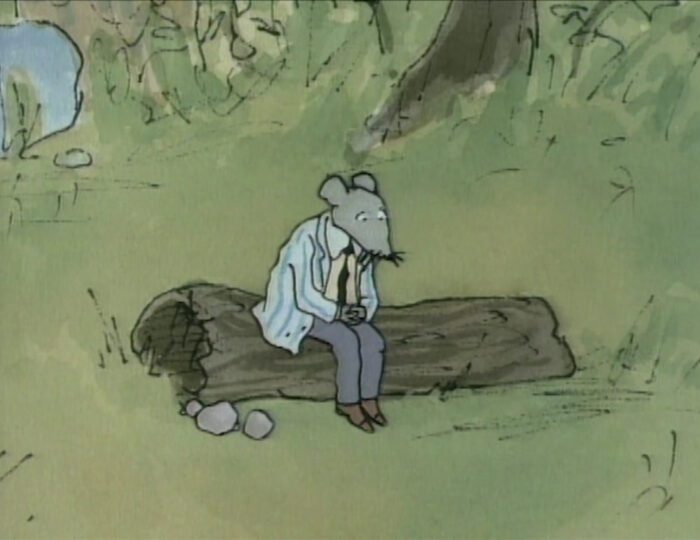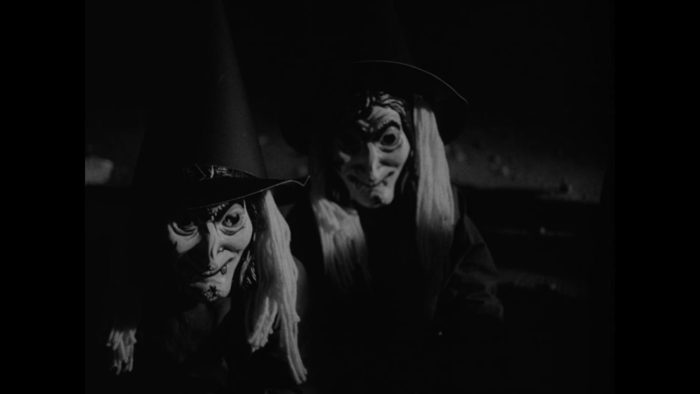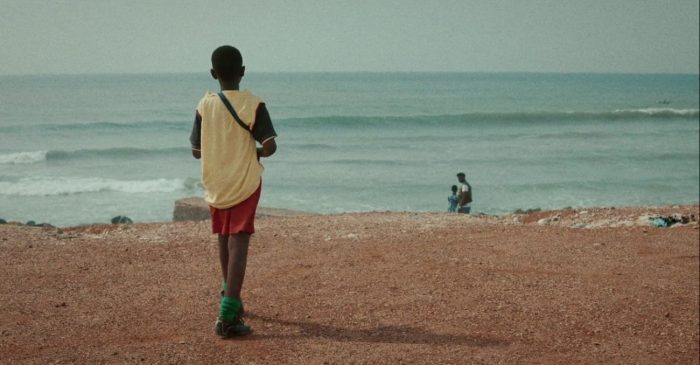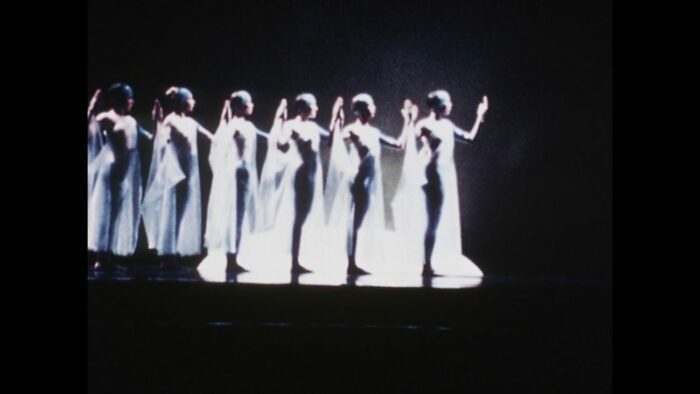Each month, dozens of new films are added to the Criterion Channel. While the rich selection of feature-length classic and independent films obviously gets a lot of well-deserved attention, I wanted to shine a little light on some of the short films. I believe that shorts should get a lot more attention than they typically do—they are breeding grounds of experimentation and non-traditional storytelling, and often are important outlets for marginalized voices.
This month was another strong one, with over 20 short films added to the Criterion Channel. The slate was dominated by mid-century filmmaker Shirley Clark, who had 15 short films added to the Channel, 16 if you include both versions of Bridges-Go-Round, many of which had been on it before prior to this column’s run. Also added were two animated shorts by Michael Sporn and live-action shorts by Richard Leacock (which had Clarke on the crew), Marin Håskjold, and Anthony Nti, plus a two-part video installation by Laura Poitras.
While this article is exclusively focusing on short films that are on Criterion Channel, I’m also keeping track of all of the short films I watch in monthly Letterboxd lists, whether on Criterion Channel or elsewhere. I’ve listed the streaming service that I watched them on, with the films that I talk about in this article marked in the notes with two asterisks. Feel free to follow me and the lists on Letterboxd and feel free to reach out to me on Twitter if you want to discuss any of the short films. Without further ado, let’s get into the films!
Abel’s Island (1988, 30 minutes), dir. by Michael Sporn

Abel’s Island is an animated short film that tells the story of an anthropomorphic mouse who is stranded on an island after the wind from a powerful rainstorm (somewhat hilariously) blows him into a river. He spends a considerable time alone there until a frog named Mr. Gower also gets stranded on the island. Eventually, Mr. Gower heals and gains enough strength to leave the island, but (spoilers) he has memory problems and forgets the poor stranded mouse that he spent months with. Alone again, Abel decides to chance swimming across the river following a dry spell, hoping that he will survive and his wife will still be there if he does.
The charming animation and plot are elevated by Tim Curry’s narration and voice acting (yes, that Tim Curry). Curry’s instantly recognizable voice is somewhat subdued from his usual bombast, but he’s hardly phoning it in and gives a great performance. Curry brings pathos and life to Abel that could have easily been missing without him and is a big reason why I like this short over the other Sporn short film added to Criterion Channel this month, The Story of the Dancing Frog.
A Scary Time (1960, 16 minutes), dir. by Shirley Clarke and Robert Hughes

It’s probably not the most tactful to choose this fairly serious short for somewhat ironic reasons, but there is much more happening in this short than meets the eye. Ostensibly a long advertisement for UNICEF, the short proceeds innocently enough, but interspersed are small moments of nightmare fuel that elevate the short from banal to unforgettable.
The film starts with children preparing for Halloween with typical 1960s educational film cheesiness. The first time that I thought that something was amiss was a few minutes in when the children go to a bonfire. The framing of the childrens’ masks, the voiceover, and the rapid editing were surprisingly unsettling. It’s after this point when the first juxtaposition between the children playing and the children of developing nations that UNICEF is meant to aid is made. Strangely, the shift is made by cutting from a child that is crying in front of a fire—presumably scared by the Halloween festivities—to one crying behind a fire, almost as if it is engulfed in flames. The sequences in developing countries are legitimately affecting and often hard to watch, but are not out of line with similar ads that play today.
The Halloween sequences certainly elevate this film into—what is in my eyes—an oddity. Take one sequence when the children are asking questions in voiceover: things like “What’s it like to be really hungry?” and “What’s it like to be really sick?” This sequence is capped by the question “What’s it like to be dead?” This is a genuinely disconcerting question to come from a child. The end of the short is no less unsettling, with a child apparently having a nightmare and screaming “Help! Help! Mommy! Daddy! Make it stop! Make it stop!” And then the short just ends. I don’t know if the short stuck with me for the right reasons, but at the very least, it stuck with me.
Da Yie (2019, 21 minutes), dir. by Anthony Nti

Set in Ghana, Da Yie (“Good Night”) tells the story of two young children named Prince and Matilda. When Prince runs away from home after disobeying his mother, he and Matilda meet a man that we only know as Bogah. Bogah invites the children to spend time with him and watch a soccer game at a bar. Matilda, who is the much more outgoing of the two children, eagerly goes along with the stranger, while Prince is much more reluctant throughout.
Da Yie is something of a slow burn, with the tension coming from the suspicion raised about Bogah’s shady intentions with the children. Throughout the day, however, Bogah seems to develop a genuine affection for the children, and vice-versa, to the point where it wouldn’t be a stretch to say that Prince seems to develop a father/son or older brother/younger brother bond with him. Whether or not this quick bond is enough to protect the two children is a question that you’ll have to find out by watching the short film on Criterion Channel!
Four Journeys into Mystic Time: Initiation (1978, 28 minutes), dir. by Shirley Clarke

At some point, I’ll need to write a standalone essay about Maya Deren, because this is the third time that I’ve talked about her in relation to other artists’ work. Whereas I usually talk about Deren in terms of her importance to trance films, it is her influence on Clarke that I want to briefly examine here, especially in their use of dance, ritual, and time. Both women were seminal avant-garde filmmakers, with Deren being only a few years older than Clarke (born 1917 versus 1919) that frequented a Greenwich Village scene in the 1950s. The title Four Journeys into Mystic Time even seems like a near-explicit reference to Deren’s short film Ritual in Transfigured Time. The subtitle and content of the short make the tribute to Deren even more clear—it is an initiation ritual.
Of the set of four short films, all of which were added to Criterion Channel this month, I found Initiation to be the most entrancing. The shorts all record dance performances, and while the other films have their interesting elements—mostly through their experiments with early video effects—but the intentional pace, editing, lighting effects, and music come together in Initiation. In a way, it is the most stripped-down film in the set, but its apparent simplicity is one of its major strengths. In a strange way, Initiation takes me to the same headspace that I experience while watching the first 45 minutes of David Lynch’s film Lost Highway, which I believe is one of the most absorbing sequences that Lynch has ever produced. Both films feature haunting scores and slow, almost alien pacing, but these elements combine to form an almost trancelike experience that make you forget how long you have been watching them. They’re obviously very different films—with Lost Highway being about a man who (maybe?) kills his wife and Initiation being a modern dance film representing an occultish ritual, but these elements are very similar—and with similar results.
Closing
This is just a taste of the newly added short films on Criterion Channel in September! What were some of your favorites? Was there a filmmaker whose filmography you’re excited to dive deeper into? I’ve now seen a handful of Shirley Clarke shorts multiple times, and adored her feature-length documentary Ornette: Made in America, so I would like to check out some of her other features and read more about her. Let me know in the comments what stuck out to you, or reach out to me on Twitter, and I’ll be back next month to look at some more Criterion Channel short films!



